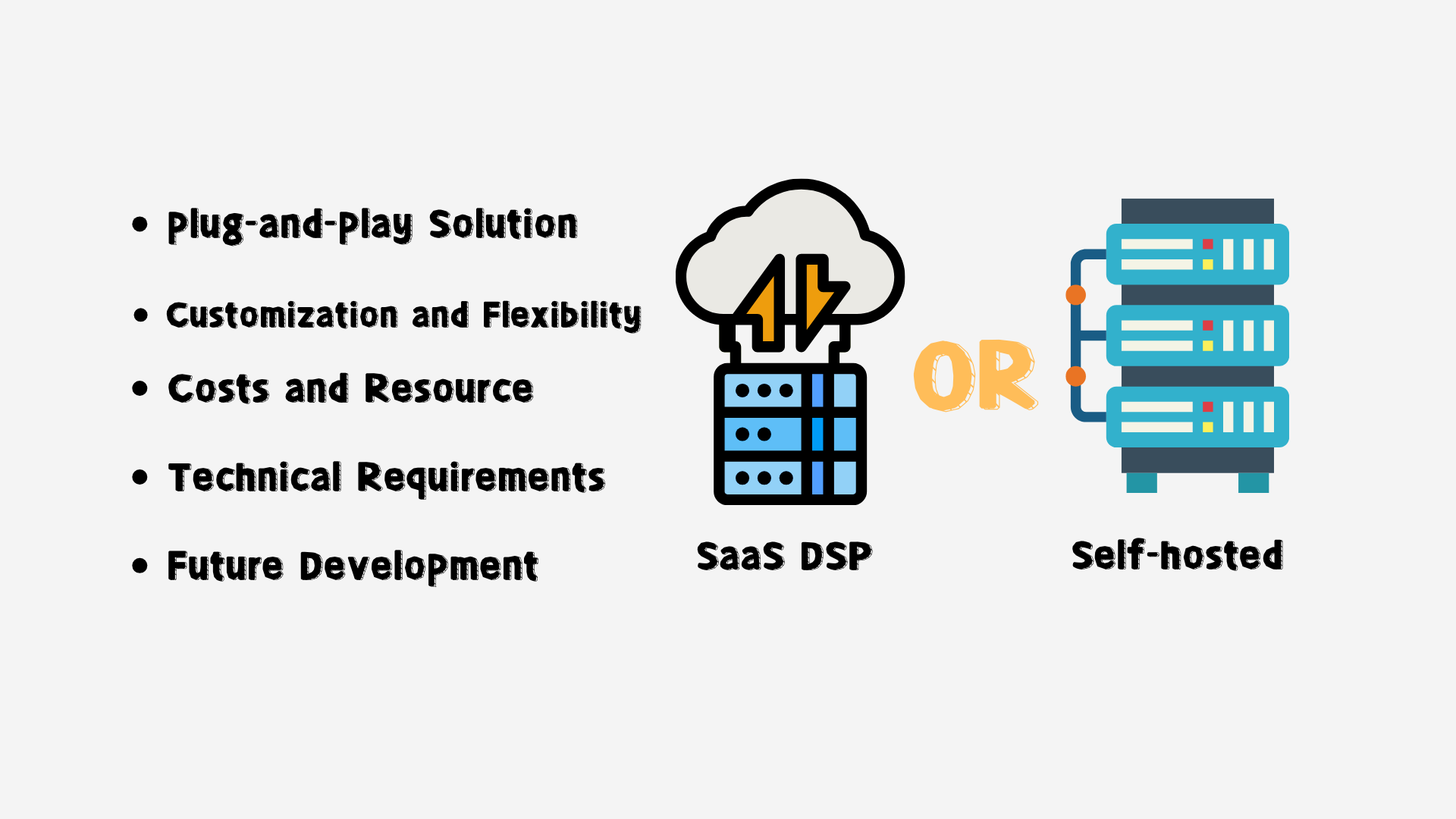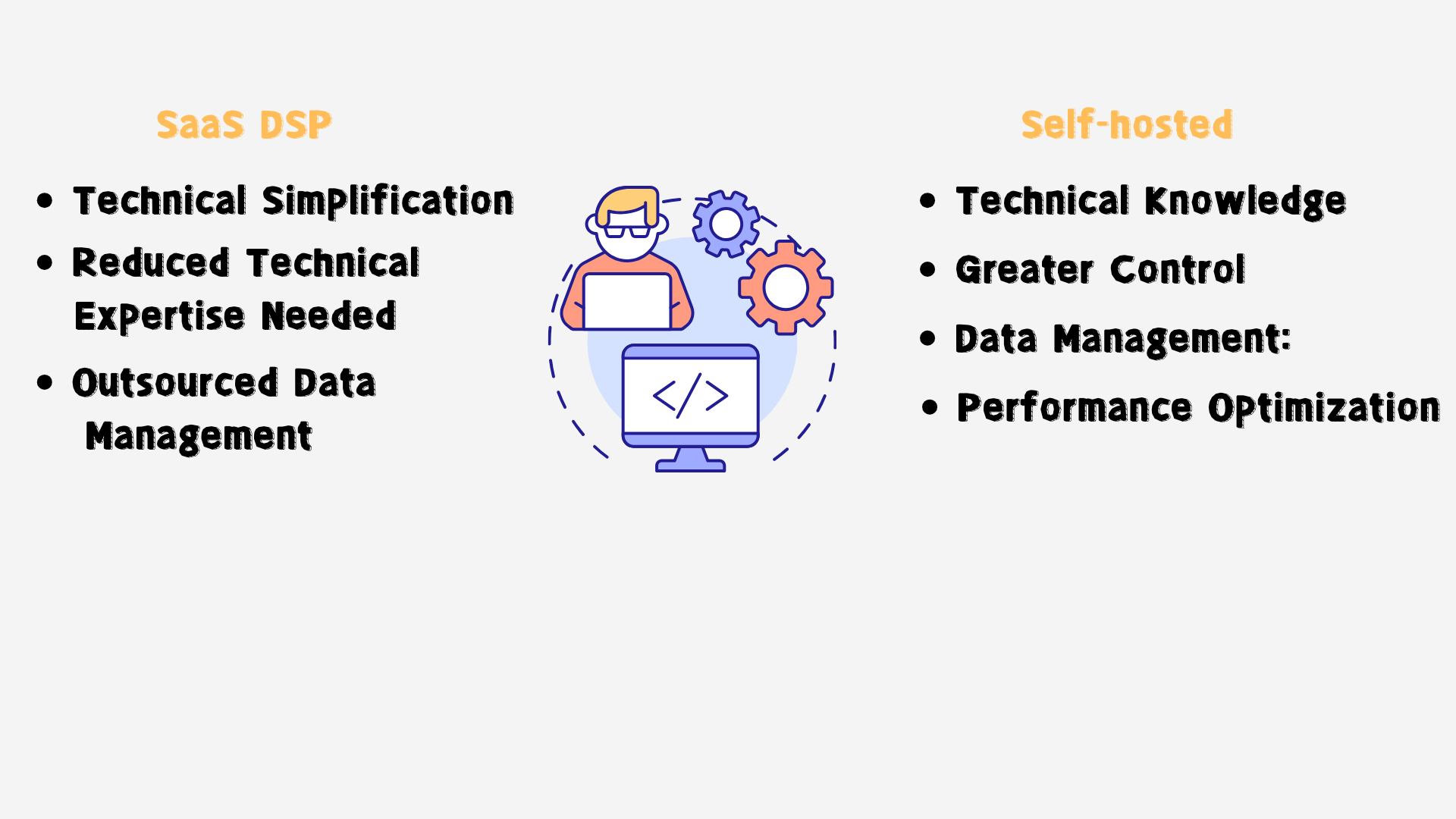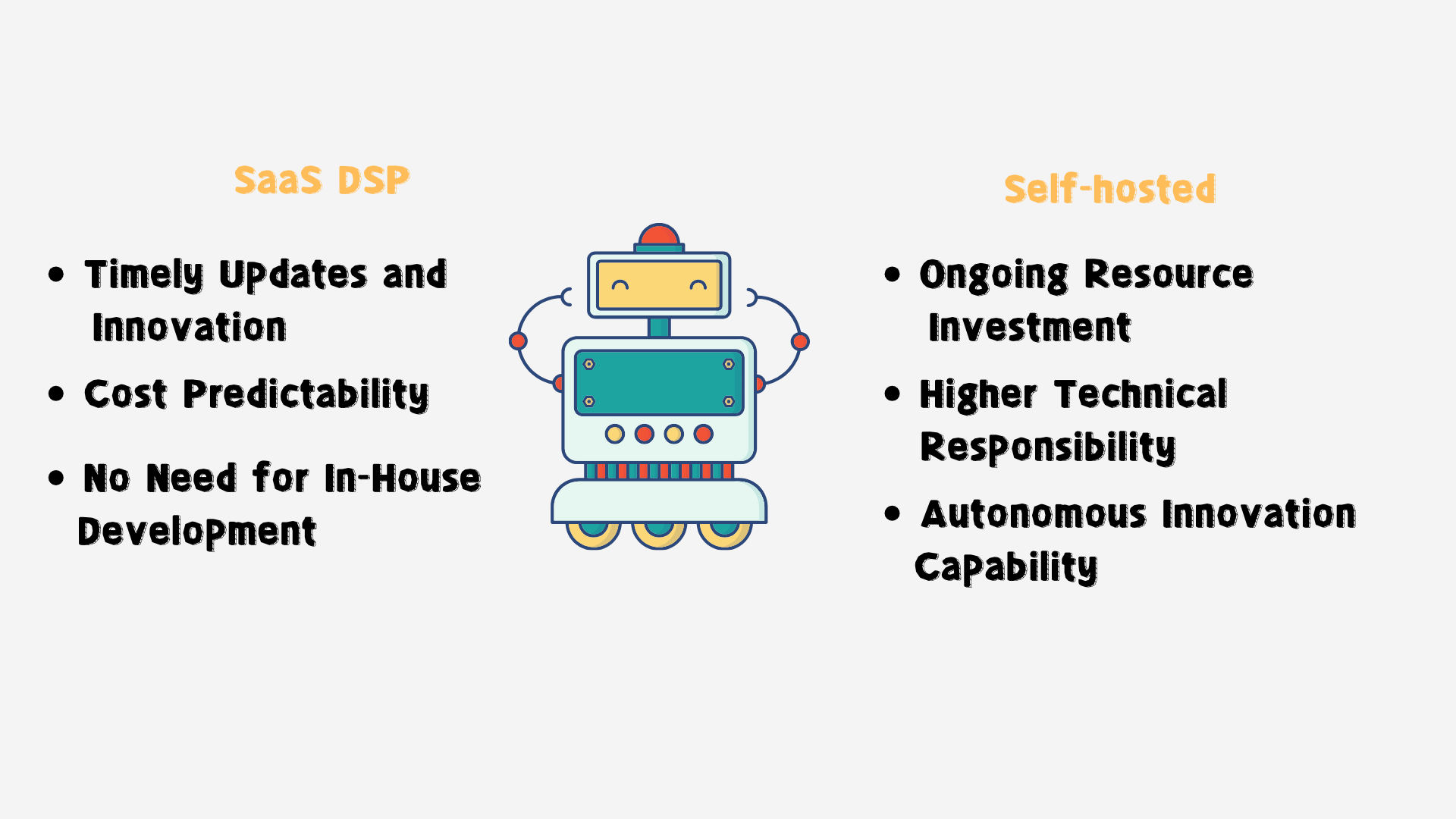
Choosing an Advertising Delivery Platform: DSP SaaS or Self-Built DSP?
In today’s digital age, advertising deployment has become a crucial strategy for businesses to engage target audiences and enhance brand visibility.
However, advertisers and marketers often face a pivotal decision: Should they opt for DSP SaaS (Demand-Side Platform Software as a Service) or build their own DSP (Demand-Side Platform) from scratch? This decision directly impacts costs, effectiveness, and overall business strategies.
This article delves into this topic comprehensively to help decision-makers better understand the considerations associated with this choice.

DSP SaaS: Plug-and-Play Convenience
DSP SaaS offers a ready-to-use solution, allowing advertisers to swiftly launch advertising campaigns.
Without the need for extensive time and resource investments in constructing the underlying infrastructure, advertisers can quickly create campaigns and customize ad creatives.
Moreover, DSP SaaS platforms often provide intuitive user interfaces, making it accessible for advertisers and teams to acclimate quickly and focus on formulating effective advertising strategies.
Self-Built DSP: Customization and Flexibility
Self-built DSP provides increased customization and flexibility. Advertisers can tailor platform functionalities to cater to specific business goals and strategies.
This customization is particularly crucial for businesses with unique demands, enabling them to design features, interfaces, and reporting structures according to their needs.
Furthermore, self-built DSP seamlessly integrates into internal processes and data structures.
Costs and Resource Allocation

DSP SaaS:
- Low Initial Investment
Advertisers do not need to purchase expensive hardware or infrastructure, reducing the entry barrier.
- Incremental Subscription Costs
While the initial investment is low, subscription costs for SaaS platforms may gradually increase as advertising scales.
- Minimal Human Resources
Relatively fewer personnel are required to set up and manage ad campaigns, typically involving ad operations professionals, data analysts, and ad tech experts.
- No Hardware Maintenance
SaaS DSP is hosted in the cloud, eliminating the need for additional hardware maintenance and infrastructure management.
- Data Access Fees
Data access fees are incurred as SaaS DSPs typically require access to ad inventory, user data, and third-party data providers.
Self-built DSP:
- High Initial Investment
Self-built DSPs require extensive development work, including building ad delivery engines, data management systems, real-time bidding systems, resulting in a higher initial investment.
- Human, Technical, and Time Resources
Hiring a development team, including software engineers, data scientists, and system administrators, consumes significant human, technical, and time resources.
- Hardware and Infrastructure Costs
Self-built DSPs necessitate the purchase and maintenance of servers, storage devices , and network infrastructure, increasing costs.
- Customization Capability
Offers higher customization capability, allowing the construction of ad platforms tailored to specific needs.
- Data Management
Requires self-management of ad data, including storage, analysis, and protection.
In summary, DSP SaaS typically involves lower initial investment and resource allocation as it is cloud-hosted, while self-built DSPs demand more financial, technical, and time resources for construction and maintenance. The choice between these models depends on the specific needs, budget, and technical capabilities of advertisers.
Technical Requirements and Control

DSP SaaS:
- Technical Simplification
DSP SaaS providers handle the technical intricacies of the platform, simplifying the technical requirements for advertisers. This allows advertisers to focus on managing and optimizing ad campaigns.
- Reduced Technical Expertise Needed
Advertisers do not need extensive technical expertise to operate a DSP SaaS platform. The provider takes care of server management, data security, and infrastructure maintenance.
- Limited Customization
While DSP SaaS offers convenience, it may have limitations in terms of customization and meeting specific technical demands.
- Outsourced Data Management
Data management, including storage, analysis, and security, is outsourced to the SaaS provider, ensuring data compliance.
Self-built DSP:
- Technical Knowledge Required
Advertisers need to have a higher level of technical knowledge and expertise to effectively manage and maintain a self-built DSP. This includes server management, data security, and performance optimization.
- Greater Control
Self-built DSPs provide advertisers with more control over the technical aspects of the platform. This level of control allows for customization and tailored solutions to meet specific technical requirements.
- Data Management
Advertisers are responsible for data management, including storage, analysis, and ensuring data security and compliance.
- Performance Optimization
Optimization of server performance and infrastructure falls under the advertiser’s responsibility, allowing for fine-tuned adjustments.
In summary, self-built DSPs demand a higher level of technical knowledge and offer greater control over technical aspects, making them suitable for advertisers with specific technical requirements. In contrast, DSP SaaS simplifies technical demands, allowing advertisers to focus on campaign management, but with potentially limited customization options. The choice depends on the advertiser’s technical expertise and the level of control they require.
Future Development and Innovation

DSP SaaS:
- Timely Updates and Innovation
DSP SaaS providers typically release new features and updates regularly to adapt to the constantly evolving digital advertising landscape. This helps users remain competitive and stay at the forefront of technology.
- No Need for In-House Development
Using DSP SaaS means there is no requirement to develop new features or technological innovations in-house, as the provider manages these aspects. This relieves advertisers of the burden of technological innovation.
- Cost Predictability
Due to the typically transparent and predictable pricing models of DSP SaaS, advertisers can more easily plan their future advertising expenditures.
Self-built DSP:
- Autonomous Innovation Capability
Self-built DSP allows advertisers to have greater autonomous innovation capability, enabling them to develop unique features and solutions tailored to their specific needs and vision.
- Ongoing Resource Investment
Self-built DSP requires continuous resource investment to stay at the forefront of technology. This includes technical research and development, updates, and maintenance to ensure the platform consistently adapts to market changes.
- Higher Technical Responsibility
Advertisers assume a higher level of technical responsibility, including ensuring platform security, performance, and compliance.
When making the choice between DSP SaaS and self-built DSP, considering future development and innovation is crucial. DSP SaaS typically provides timely updates and innovations, relieving advertisers of the technological burden, but may have limitations in autonomous innovation capability. Self-built DSP allows for more autonomy in innovation but demands more resources and technical responsibility. The decision depends on advertisers’ strategic goals, resource availability, and attitude toward technological innovation.
Conclusion
Choosing an advertising delivery platform is a critical decision that should be made based on a comprehensive assessment of multiple factors.
DSP SaaS offers rapid deployment, flexibility, and lower initial investment, making it suitable for businesses aiming to quickly enter the market or those with limited technical resources.
Self-built DSP provides greater customization and control, suitable for enterprises with specific technical requirements, particularly those with established technical teams. The decision should align with your business’s strategic goals, resource allocation, and technical capabilities to make the choice that best suits your business. Ultimately, whether you choose DSP SaaS or self-built DSP, the key lies in selecting the path that aligns with your needs and provides robust support for your business growth.